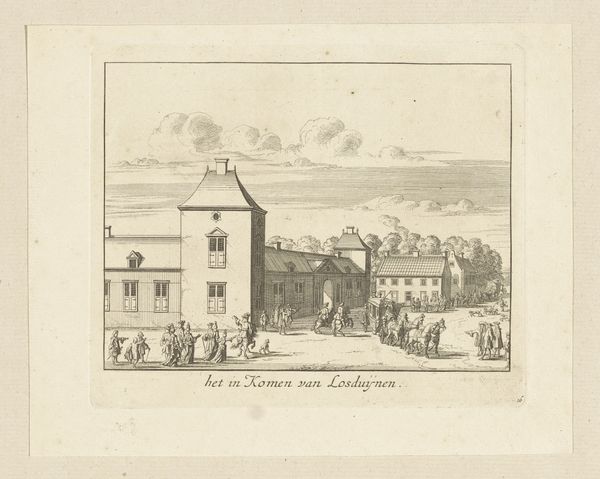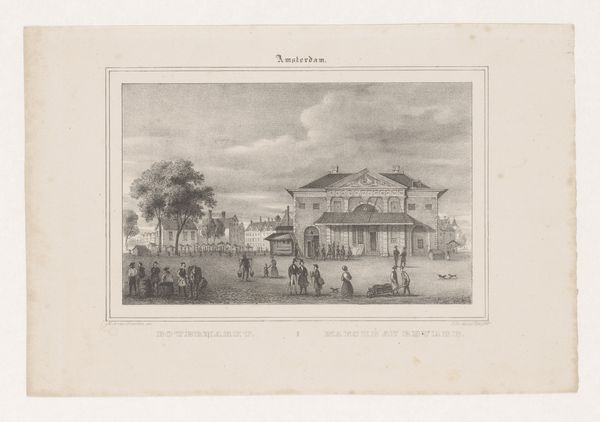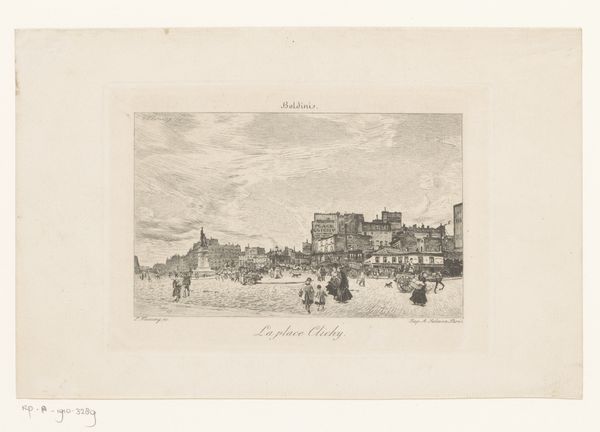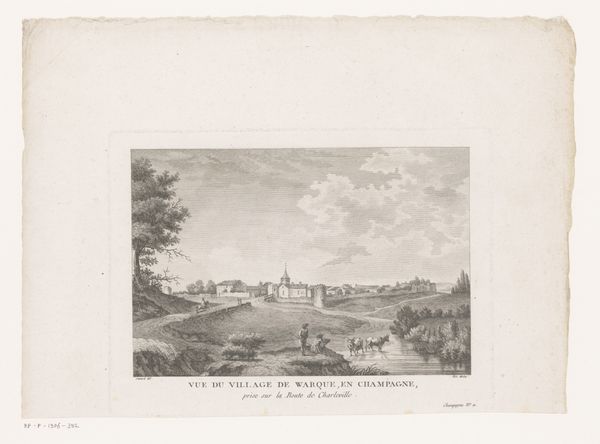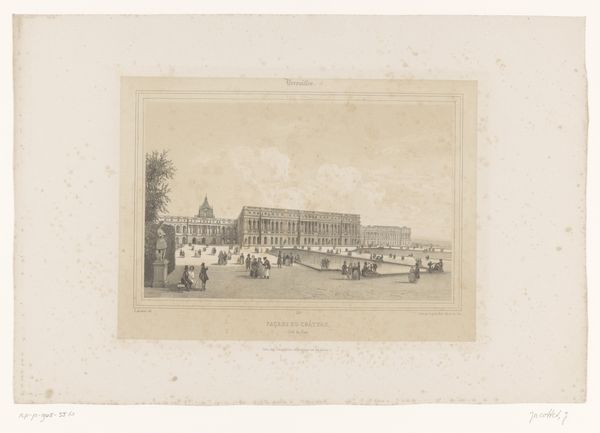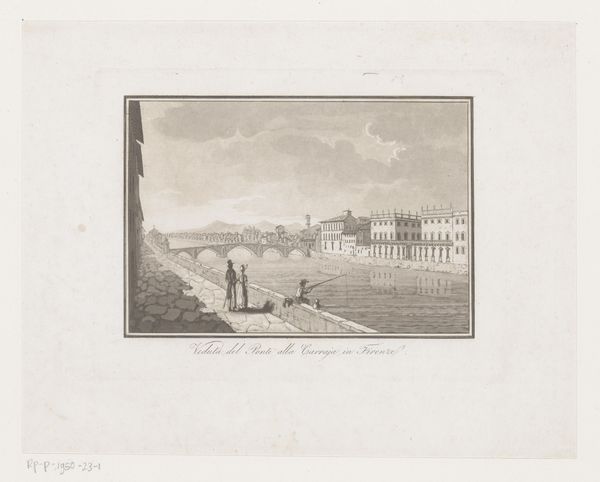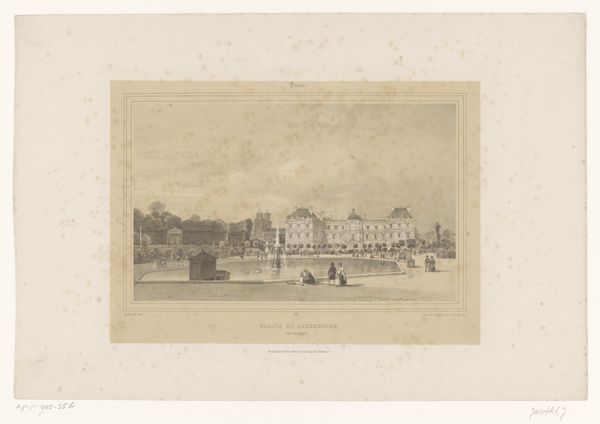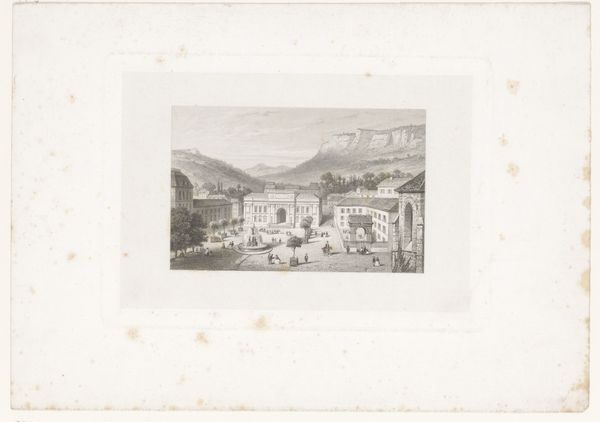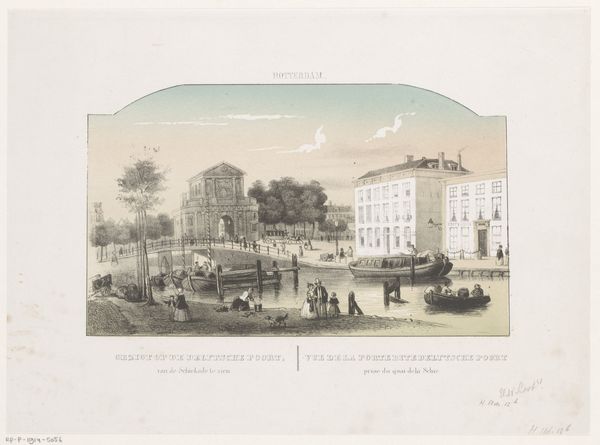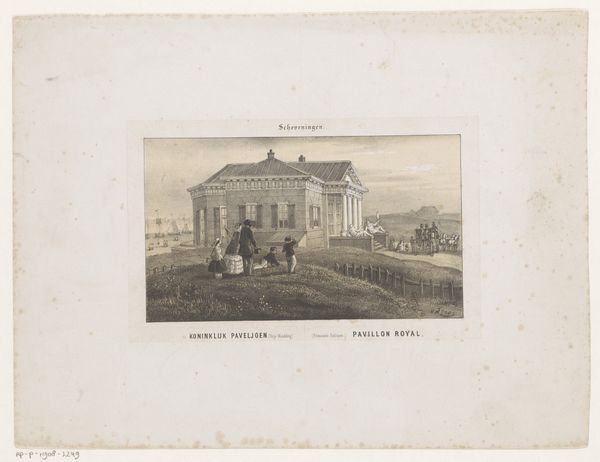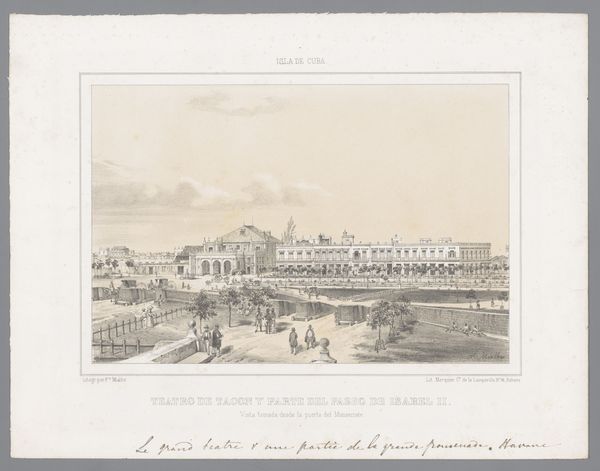
lithograph, print, etching, engraving
#
lithograph
# print
#
etching
#
landscape
#
cityscape
#
genre-painting
#
engraving
#
watercolor
#
realism
Dimensions: height 250 mm, width 325 mm
Copyright: Rijks Museum: Open Domain
Curator: Well, isn't this just serene? I see swirling skirts and men on horseback—all heading towards that impressive Scheveningen bathhouse. What do you make of it? Editor: I'm struck by the uniformity. The bathhouse itself is like a factory for leisure, and those bathing machines…rows of identical units promising privacy while exposing all to a commodity. It makes you wonder about the business of wellness. Curator: You're absolutely right, there's an industry brewing here, isn't there? This piece, "Badhuis in Scheveningen," attributed to Hendrik Wilhelmus Last, probably somewhere between 1827 and 1873, really captures that shift, doesn’t it? The piece is a print—using lithography, etching, and engraving—to create this lovely seaside scene. And yet, there’s something…distant about it. Like a stage set for social performance. Editor: Precisely. And look at the details produced via etching and engraving! The level of craft to show this town, which would've taken many hands to develop into this site of modernity. Curator: Yes, a constructed space for seeing and being seen. Those little bathing machines, each a little world—carrying a silent passenger, preparing themselves for… what? Transformation? Revelation? I find myself wondering what’s beneath those billowing dresses and tightly buttoned coats. Editor: I find it intriguing. These bathing machines – the precursor to the modern dressing room. A commodified private space built atop sand – shifting, unreliable. Last created this interesting document reflecting the growing leisure industry of the era and its impact on coastal communities. Curator: That instability is perfectly echoed in the medium itself—a lithograph layered with etching and engraving – a fragile balance of techniques for a world on the cusp of dramatic change. It really underscores the transience of these moments and perhaps even of that pursuit of leisure itself. Editor: Agreed, and from a materialist lens, it showcases how these techniques enable art's accessibility, enabling this captured leisure scene to circulate beyond the confines of the wealthy. Curator: It's funny, it seems what draws me is the mystery – the unsaid and unseen – and for you, it's the way the whole thing works, the how and the why it’s replicated. I find it speaks of desires unfulfilled, like whispers carried on the sea breeze. Editor: Right, each tiny house containing all these hopes and expectations... It all feeds back into the engines of industry and labor and our present too, actually.
Comments
No comments
Be the first to comment and join the conversation on the ultimate creative platform.

